The Everest Base Camp Trek offers an unparalleled journey through the heart of the Himalayas, attracting adventurers eager to witness the majestic landscape and vibrant culture of Nepal. Over 14 days, trekkers traverse picturesque villages and visit sacred monasteries, all while guided by seasoned leaders who ensure a safe and enriching experience. The trek culminates at the world-renowned base camp, but what awaits travelers along the route, and how can they best prepare for such a formidable adventure? The answers reveal the unique challenges and rewards that define this iconic journey.
Key Points

- The Everest Base Camp Trek is a 14-day guided journey culminating at the foot of Mt. Everest, reaching 8,848 meters.
- Key highlights include a scenic flight to Lukla, visits to Tibetan Buddhist monasteries, and breathtaking views from Kala Patthar.
- Accommodation includes 3-star hotels in Kathmandu and comfortable tea houses during the trek, with all meals provided.
- Safety is prioritized with experienced trek leaders, porter support, and first aid supplies for emergencies.
- Optimal trekking times are pre-monsoon (March to May) and post-monsoon (September to November) for the best weather and views.
Trek Overview and Highlights
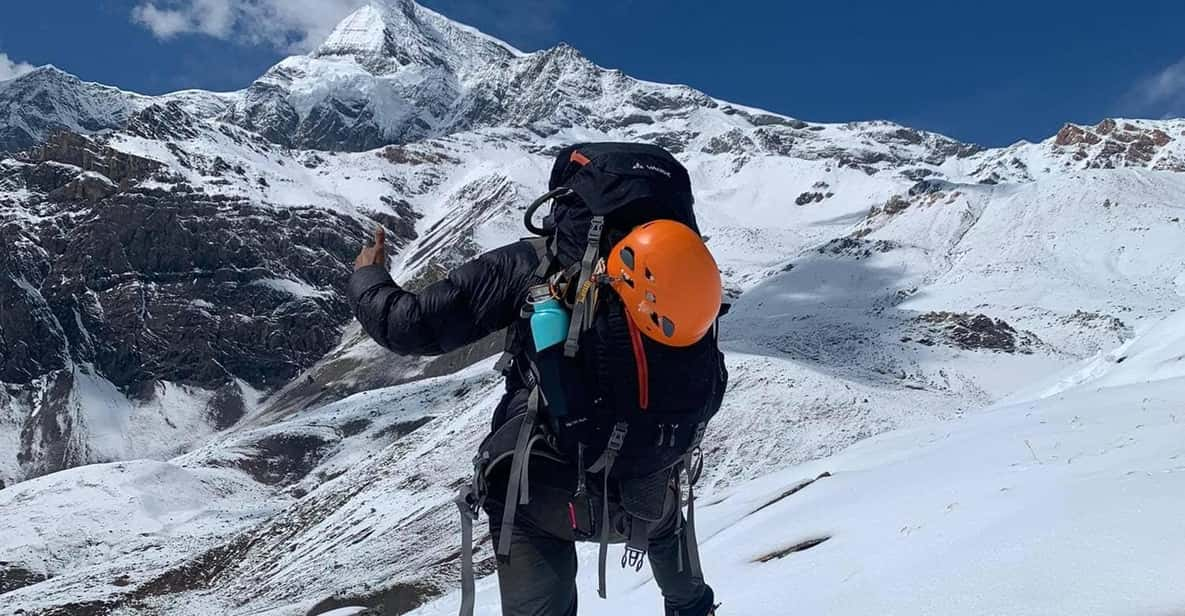
The Everest Base Camp Trek offers adventurers an unforgettable journey, culminating at the foot of the world’s highest peak, Mt. Everest, standing tall at 8,848 meters.
Spanning 14 days, this trek invites a small group of up to 15 participants, ensuring a personalized experience. Guided by an English-speaking tour leader, trekkers navigate the stunning landscapes, witness breathtaking Himalayan peaks, and explore picturesque Sherpa villages.
Highlights include the exhilarating flight to Lukla airport and a visit to Kala Patthar, renowned for its panoramic views.
Along the way, trekkers can enjoy the rich culture by visiting Tibetan Buddhist monasteries like Tengboche, making this trek not just a physical challenge, but a profound cultural experience.
You can also read our reviews of more hiking tours in Pheriche
Trekking Route and Experience
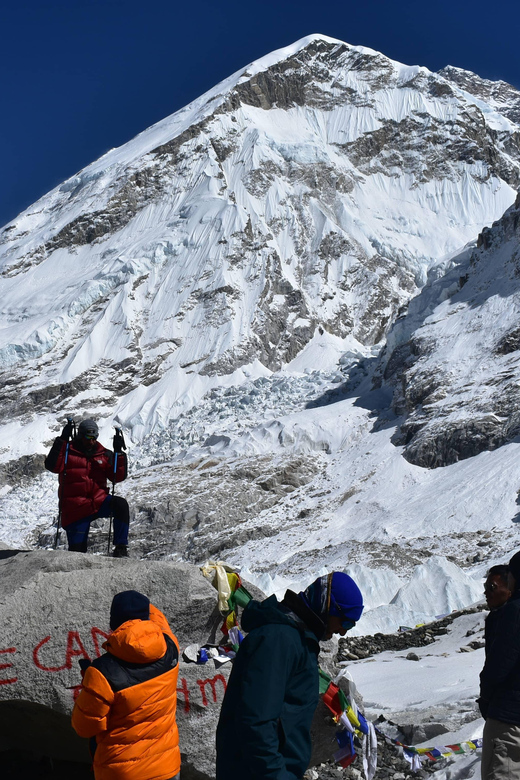
Starting with a thrilling flight to Lukla, adventurers embark on a mesmerizing trek through stunning landscapes that includes charming villages, towering peaks, and the breathtaking Khumbu Glacier. The route leads trekkers through notable locations like Phakding, Namche Bazaar, Dingboche, and Lobuche. Along the way, they traverse the picturesque trails of Debuche and Tengboche, all while enjoying magnificent views of mountains like Thamserku and Ama Dablam. The journey culminates with a climb to Kala Patthar and Everest Base Camp, offering unforgettable experiences of the unique flora, fauna, and culture in Sagarmatha National Park.
| Trekking Highlights | Locations Visited | Elevation (m) |
|---|---|---|
| Stunning views | Namche Bazaar | 3440 |
| Cultural sites | Tengboche | 3860 |
| Base Camp | Everest Base Camp | 5364 |
Inclusions and Accommodation
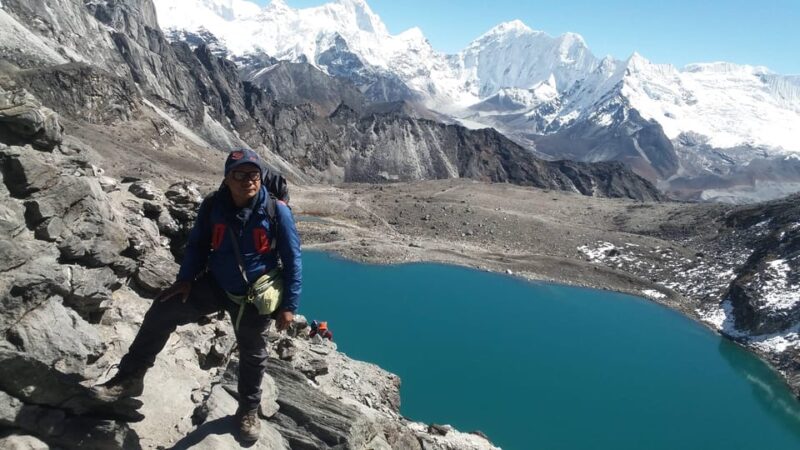
Along With the breathtaking trek through the Himalayas, participants can expect a range of inclusions and comfortable accommodations that enhance their overall experience. Each trekker receives thoughtful provisions to ensure a smooth journey, from start to finish.
-
Airport pick-up and drop-off in a private vehicle
-
3-star deluxe accommodation in Kathmandu (twin sharing) with breakfast
-
Clean and comfortable tea house accommodation during the trek
-
All meals (breakfast, lunch, dinner) with tea/coffee during the trek
These inclusions not only provide convenience but also allow trekkers to focus on enjoying the stunning landscapes and rich culture of the region.
With these comforts, participants can truly enjoy the adventure.
Support Services and Safety
Participants can rest assured knowing that a highly experienced, government-licensed Trek Leader will guide them throughout the journey, prioritizing their safety and well-being. Each trekker benefits from professional support services, including a porter service to carry main luggage, ensuring a comfortable experience.
| Support Service | Description |
|---|---|
| Trek Leader | Licensed, experienced, first-aid trained |
| Porter Service | 1 porter for every 2 trekkers |
| First Aid Supplies | Kit includes essential medicines |
| Safety Equipment | Pulse oximeter and emergency gear |
With these measures in place, trekkers can focus on enjoying the breathtaking landscapes and cultural experiences, knowing that their safety is a top priority.
More Great Tours NearbyAdditional Information and Costs
Trekkers will find essential information regarding costs and additional fees that may arise during their Everest Base Camp journey. Understanding these aspects helps in budget planning and avoiding unexpected expenses.
Here are some key points to consider:
-
Visa Fees: A Nepalese visa is required, with varying costs depending on duration.
-
Extra Baggage Charges: Airlines may impose fees for luggage exceeding the 20kg allowance.
-
Accommodation and Meals: Additional nights in Kathmandu or extra meals can add to overall costs.
-
Personal Expenses: This includes souvenirs, drinks, and tips for staff.
Corporate Adventure Treks emphasizes transparency, ensuring trekkers are well-informed about potential expenses before they embark on their adventure.
Best Time to Trek
The best time to trek to Everest Base Camp falls during the pre-monsoon and post-monsoon seasons, offering optimal weather conditions and stunning views of the majestic Himalayas. Trekking during these periods ensures clear skies and moderate temperatures, enhancing the overall experience.
| Season | Best Months | Weather Conditions |
|---|---|---|
| Pre-Monsoon | March to May | Mild temperatures, clear skies |
| Monsoon | June to August | Heavy rains, difficult conditions |
| Post-Monsoon | September to November | Crisp air, stunning views |
Choosing the right time not only maximizes comfort but also provides trekkers with breathtaking vistas of iconic peaks, making the adventure truly unforgettable.
Essential Packing List
Packing wisely for the Everest Base Camp Trek can significantly enhance the trekking experience, ensuring comfort and preparedness for the varying conditions encountered along the route. A well-thought-out packing list is essential for tackling the challenges of high altitudes and unpredictable weather. Trekkers should prioritize lightweight, durable items that provide warmth and protection.
Warm layers: Insulating jackets and thermal base layers
Good trekking boots: Sturdy, waterproof footwear for rugged terrain
Daypack: Comfortable, lightweight bag for daily essentials
Hydration system: Water bottles or hydration bladders to stay hydrated
Health and Fitness Preparation
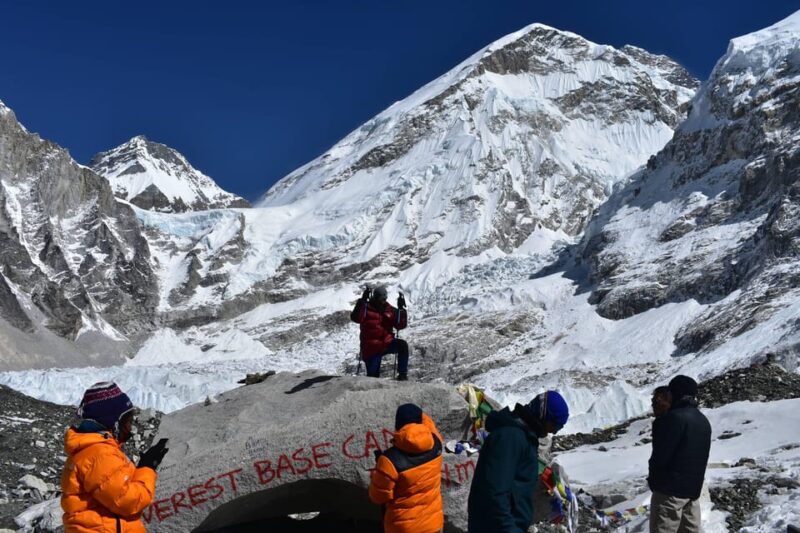
Preparing for the Everest Base Camp Trek requires a solid foundation of health and fitness to tackle the challenges of high-altitude trekking effectively. A well-structured training program can enhance stamina, strength, and endurance. Trekkers should include cardiovascular exercises, strength training, and flexibility workouts in their routines.
Here’s a simple guide for fitness preparation:
| Activity | Recommended Duration |
|---|---|
| Cardiovascular workouts | 30-60 minutes, 3-5 times a week |
| Strength training | 30-45 minutes, 2-3 times a week |
| Hiking with a pack | 2-4 hours, 1-2 times a week |
| Flexibility exercises | 10-15 minutes, daily |
| Rest and recovery | Prioritize at least 1 full rest day weekly |
With proper preparation, trekkers can enjoy their adventure while minimizing health risks.
Frequently Asked Questions
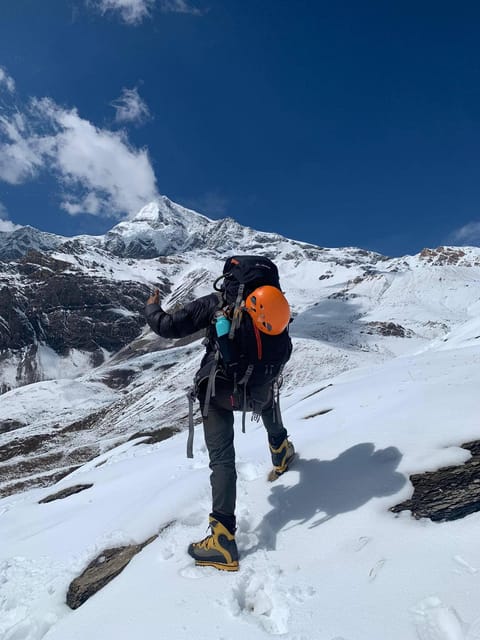
What Is the Best Way to Prepare Mentally for the Trek?
To prepare mentally for the trek, one should visualize success, embrace challenges, and cultivate a positive mindset. Setting realistic goals and practicing mindfulness can also help maintain focus and resilience throughout the journey.
Are There Any Age Restrictions for Participants in the Trek?
Participants typically range from 12 to 70 years old, but age restrictions can vary by trek. It’s essential for individuals to assess their fitness levels and consult with the trek organizers before signing up.
How Can I Stay Connected During the Trek?
During the trek, participants can stay connected through local SIM cards or portable Wi-Fi devices. They’ll find charging facilities in tea houses, ensuring they can share their experiences and stay in touch with loved ones.
What Is the Policy for Tipping the Trekking Staff?
The policy for tipping trekking staff varies, but generally, it’s appreciated. Travelers usually tip based on satisfaction, typically around 10-15% of the total trek cost, ensuring staff feel valued for their hard work and support.
Are There Options for Customizing the Trek Itinerary?
The company offers customizable trek itineraries, allowing participants to adjust durations, destinations, and activities. They’ll work closely with trekkers to create an experience that best suits individual interests and fitness levels, ensuring memorable adventures.
Recap
To sum it up, the Everest Base Camp Trek offers an unforgettable adventure for nature lovers and culture enthusiasts alike.
With breathtaking views, rich cultural experiences, and a supportive team guiding each step, trekkers find themselves immersed in the beauty of the Himalayas.
Whether you’re a seasoned hiker or a novice explorer, this trek promises memories that last a lifetime.
So, lace up those boots, prepare for an incredible journey, and get ready to stand at the foot of the world’s highest peak!
You can check availability for your dates here:More Hiking & Trekking Tours in Pheriche
More Tour Reviews in Pheriche
Not for you? Here's more nearby things to do in Pheriche we have reviewed
- Everest Base Camp Trek
- Kathmandu: 20 Day Everest Base Camp Trek with Kalapatthar
- Kathmandu : 14 -Day Everest Base Camp with Kala Patthar Trek
- Everest base camp trek 12 days
- Lukla: 11-Day Everest Base Camp Trek from Lukla with Guide
- Nepal: Everest Base Camp with Kalapathar Trek
- From Kathmandu: 12 – Day Everest Base Camp Guided Trek
- Kathmandu: Everest Helicopter Tour with Syangboche Landing
- From Kathmandu: 11- Day Everest Base Camp Trek with Guide
- From Pokhara: 11-Day Budget Everest Base Camp Trek
- Kathmandu : Budget 15-Day Everest Base Camp Trek /2025
- From Lukla: 18-Day Everest Base Camp and Gokyo Lakes Trek
